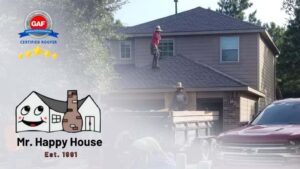
Best GAF Certified Roofers in The Woodlands, TX – Quality Roof Replacement, Gutters & Siding
Best GAF Certified Roofers in The Woodlands, TX – Quality Roof Replacement, Gutters & Siding Best GAF Certified Roofers in The Woodlands, TX – Quality
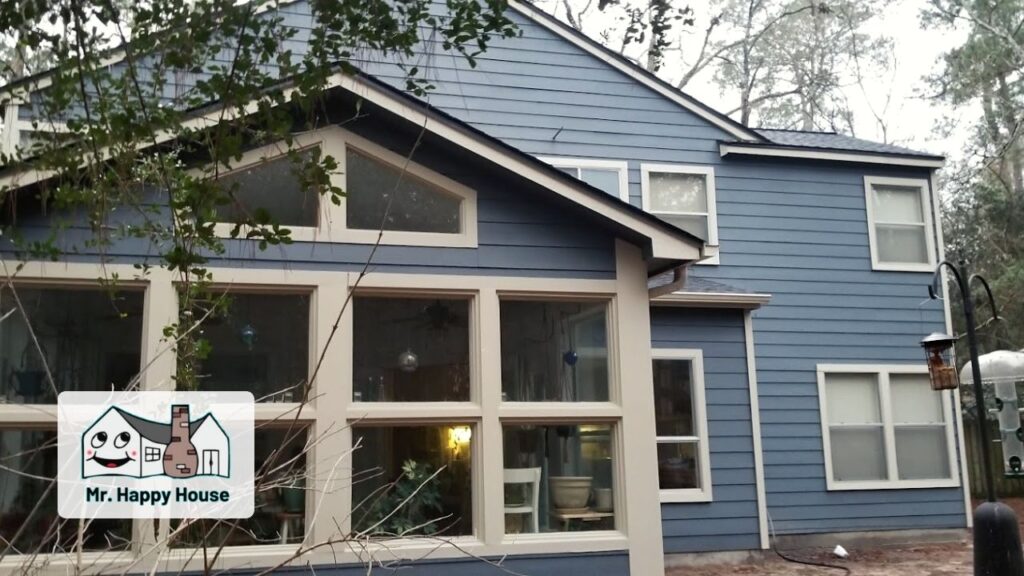
Homeowners often run into upgrades, and they usually come with a question: Is residing a home worth it? Siding can add to your home’s value, yet these projects can be pricey. Some homeowners think they will spend more to replace the siding than they will gain in value.
One survey found that 32% of US homeowners are considering adding new siding. Thus, it’s important to address whether you should invest in siding replacement.
In this article, we will list the factors you should consider before deciding on siding replacement. And by the end, you will determine whether residing in your home is a worthwhile investment.
Siding is often weatherproof material outside a wall on a house or other structure. It is the first defense against events that affect your house’s integrity. But if you notice that the siding on your home isn’t serving its intended purpose. Suppose your siding has suffered considerable damage from severe weather or pests. Or, if you want a change of style, it can be worth considering whether is residing a home worth it right now.
Siding is one of the most noticeable improvements that any homeowner can make. 23% of homeowners wish to replace their outdated siding because they are unhappy. At the same time, 36% repair outdated siding to increase their home’s curb appeal.
The short answer to whether residing a house is worth it is an absolute yes. Siding a home is worthwhile, especially if you plan to resell it or need extensive repairs. If your house siding is decaying or breaking apart, consider replacing it. At the same time, if you want your house to last for decades, then considering re-siding your home is a great option.
Residing a house involves installing new protection or replacing the old protective material. The process can alter a home’s appearance and enhance its market value.
Whether you buy a new house or intend to live in your current home, you must make financial decisions. Unfortunately, siding can fade, sag, and warp as it ages. Despite the years of guarantee that manufacturers offer, it can look less than ideal. As a result, new siding can also increase curb appeal. It can draw more customers to your door and increase the amount you may want to sell for. Thus, siding is critical to your home’s appearance. It also provides security, giving it an eye-catching appeal that may wow a buyer or you.
The value added due to the house’s new siding may vary depending on many factors. It includes the material, installation type, and the local real estate market. It’s worth noting that there are many siding materials, each with its ROI to consider. Every standard siding option has its pros and cons based on various factors. Cost, durability, maintenance, and aesthetics are a few criteria.
If you live in Texas, the weather is diverse. Your house will face hot summers, mild winters, and high humidity. Upland locations are more dry and more susceptible to intense thunderstorms. Considering this, fiber-cement material is the best option. Fiber-cement siding consists of sand, cement, and wood fibers. It can tolerate harsher conditions and is far thicker than vinyl. The return on investment for fiber-cement siding appears to be around 77% to 90%. With this ROI, homeowners may expect an increase in their home’s value for every dollar spent.
Fiber-cement siding does not need periodic maintenance or painting. Yet, if you decide later that you would like to alter your color scheme, you can repaint it. Fiber-cement siding is highly durable and has a 50-year lifespan. The costs for installation of fiber-cement siding ranged from $10,000 to $25,000. So, fiber-cement siding is your best option if you live in Texas and plan to sell your home or keep it for yourself.
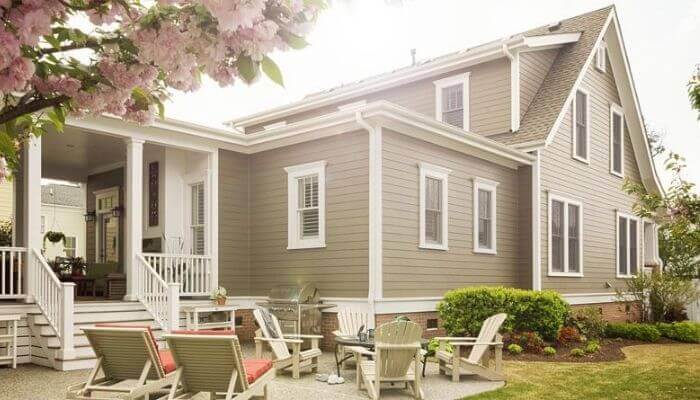
James Hardie siding, also known as Hardie Board, is widely regarded as one of the best siding options in the United States. It is also related to fiber cement, which, as discussed, is durable and resists many conditions. With meticulous maintenance, it boasts a lifetime exceeding 50 years.
More than 10 million houses in North America trust this manufacturer’s siding brand. It is regarded as the number one in the industry. By choosing this brand, you will not only increase your house’s value. You will also receive lower premiums from insurance companies.
A survey found that homes with James Hardie’s siding can get insurance discounts of up to 15%. So, homeowners who choose James Hardie siding can not only benefit financially. But it also enhances aesthetically, besides having a long-lasting and sturdy exterior.
Remodeling’s 2019 report shows that siding replacement offers a significant return on investment. Homeowners replacing their vinyl siding should receive about 75.6% return on investment.
The scorching weather in Texas is likely to destroy this type of siding. High-quality vinyl may withstand the heat, but it is more expensive. UV fading will occur, and replacement parts will not match the color exactly. When damaged, you may need to replace your entire vinyl siding, which might cost up to $15,000 or more (with Vinyl). However Vinyl siding isn’t available in the Houston area.
Stucco is a mixture of cement, lime, sand, and water. It is considered a tough finish for masonry. Like all siding materials, stucco has pros and cons. Stucco has a very long lifespan compared to other siding materials. It does not need maintenance for decades if applied correctly. But single-stucco homes face challenges in hot weather conditions. Simply put, this material is not suitable for humid and rainy conditions. Nationwide, the average installation cost falls between $8,000 and $11,000, or in the middle. Installing stucco siding can yield a 75% return on investment.
Texas residents opt for stone veneer cladding due to its practical benefits. Homeowners seeking to boost aesthetic appeal and property value often use it. Stone veneer cladding has a high return on investment—it may recoup over 102% of the initial cost. Few things can match this intelligent investment. It is an ideal combination of beauty, durability, and financial return. Stone veneer has even more outstanding durability than stucco siding.
Keep in mind that stone veneer siding is expensive. When considering residing with stone veneer, homeowners can spend around $40,000 to $100,000.
Metal siding has reinvented the concept of building exteriors. It is versatile and durable. This siding includes steel and aluminum. Metal siding is low maintenance, long-lasting, and impervious to fire, weather, and vermin. It has a high return on investment. This return is typically 60-70%. Its longevity, easy upkeep, and modern look increase the home’s value. Note that metal is not a good insulator against sound or heat.
Residing a home offers several benefits. It boosts curb appeal, increases property value, and enhances insulation and weather protection. Yet, these upgrades often require professional installation and significant upfront costs. Besides siding, homeowners have other options. Painting offers an affordable solution, drastically changing a home’s appearance instantly. Yet, it needs more maintenance and lacks the siding’s durability and energy savings.
On the other hand, siding is a long-term investment compared to painting despite higher initial costs. When deciding between siding and painting, consider your future in the home. Also, consider your plans to sell. If painting isn’t enough, you may need to investigate past siding problems. This will ultimately lead you to the decision of is residing a home worth it.
Don’t rush into costly repairs when a minor issue arises with your home’s exterior. Homeowners invest a lot, with an average of up to $8,000 in upkeep and repairs. And the expenses just keep rising. Also, when you decide to go for residing, you will make critical financial choices that can impact your wallet. But there’s a silver lining. The market is flooded with pretty, low-upkeep, high-quality siding options such as James Hardie Siding.
Take, for instance, a homeowner in a coastal region. There, durability and weather resistance are top priorities. They may opt for fiber cement siding. It can withstand harsh weather and avoid repairs. Now you know the potential returns for different siding materials. You can decide if they’re worth the cost. To prevent financial strain, set up a fund for unforeseen house maintenance. It’s a wise safeguard against the unexpected expenses that can pop up at any moment. Setting up 1% of your home’s value annually is a good idea if you want to budget for unforeseen maintenance and repairs.
If you’re unsure about the extent of the damage or the best course of action, contact Mr. Happy House of The Woodlands for a professional home evaluation.
We hoped you loved this article on if residing is worth it, please share and tune in for more roofing, siding, and house painting content!
Our Services:













Best GAF Certified Roofers in The Woodlands, TX – Quality Roof Replacement, Gutters & Siding
Best GAF Certified Roofers in The Woodlands, TX – Quality Roof Replacement, Gutters & Siding Best GAF Certified Roofers in The Woodlands, TX – Quality
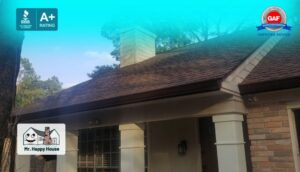
Are Gutters Part of the Roofing System?
Are Gutters Part of the Roofing System? Are Gutters Part of the Roofing System? When it comes to home maintenance, gutters often seem like a
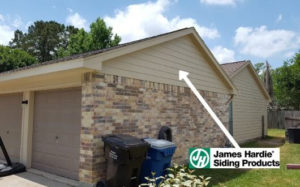
Why James Hardie is The Best Option for Home Siding
Why James Hardie is The Best Option for Home Siding Why James Hardie is The Best Option for Home Siding James Hardie stands out whether











